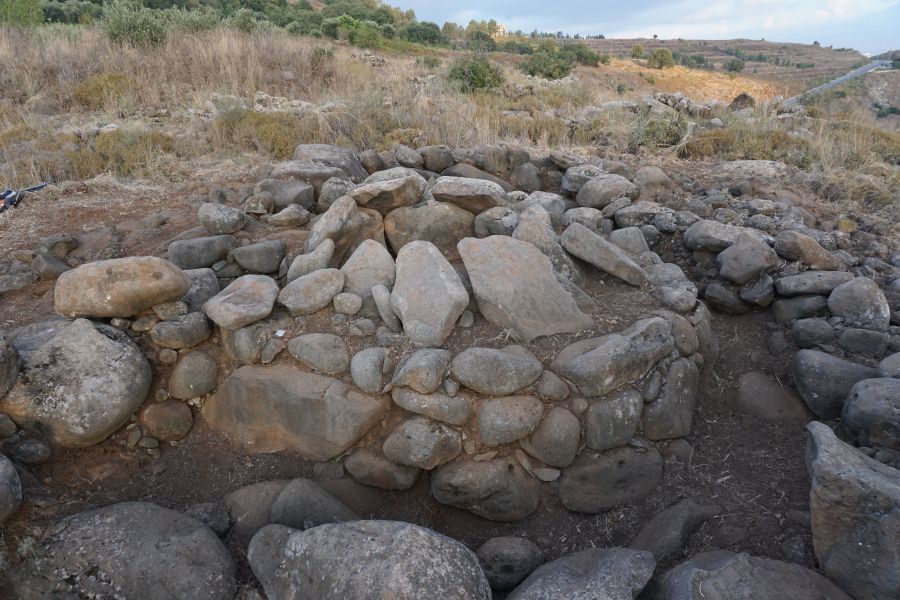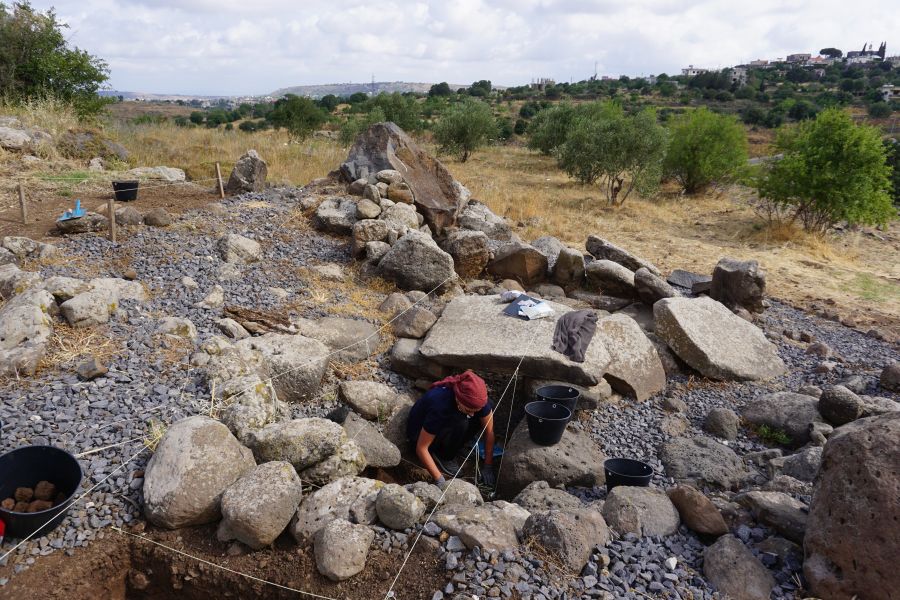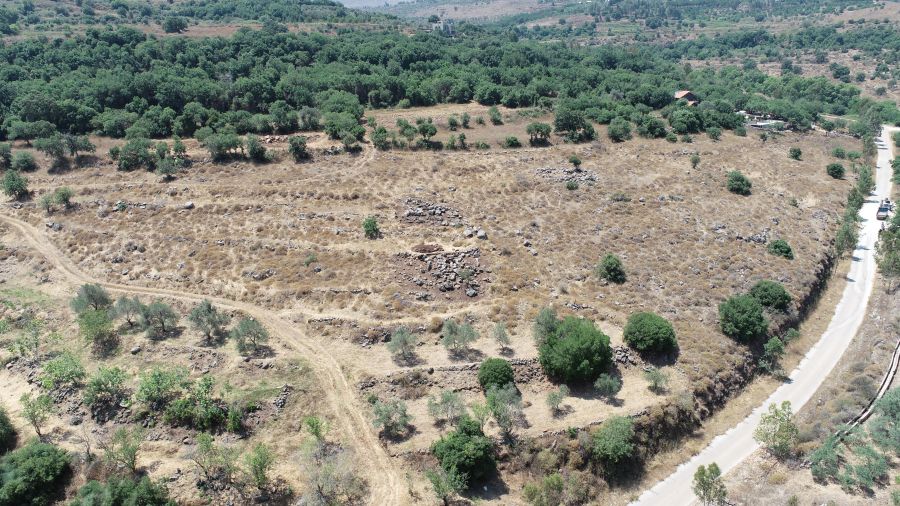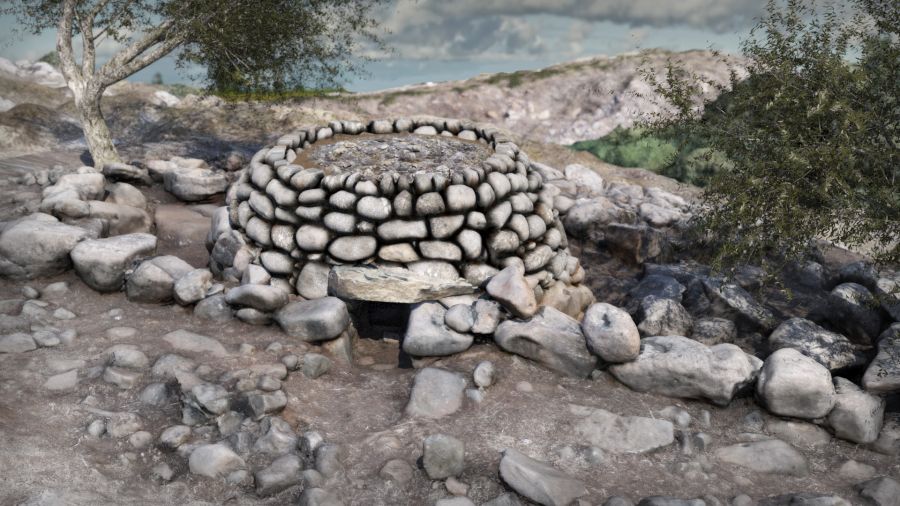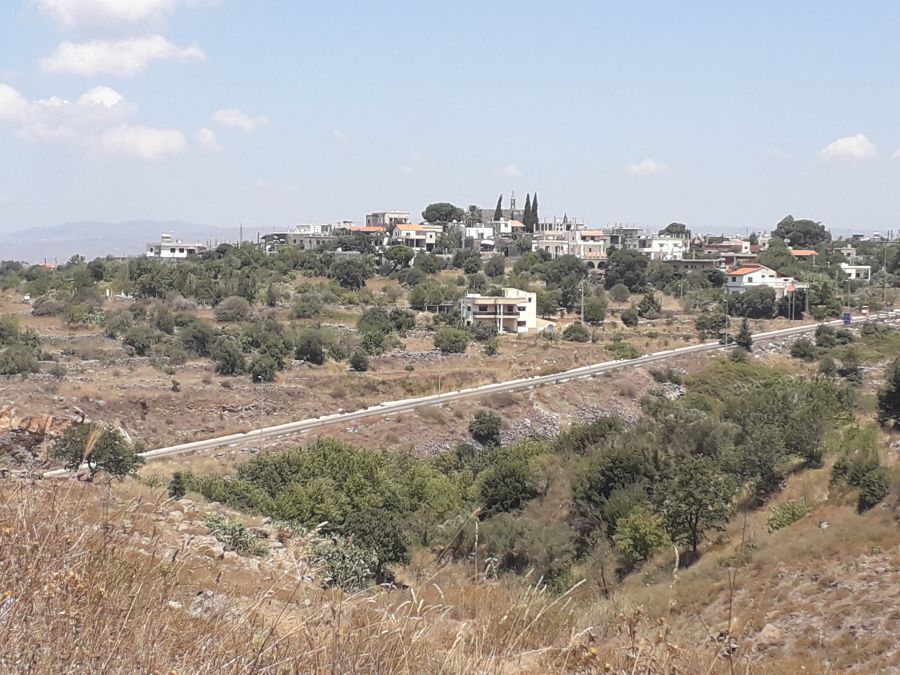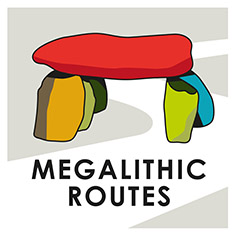Dolmen de Menjez, Libanon
Located in the north of Lebanon in the Akkar district, at an altitude of between 300 and 450 metres, the village of Menjez is built on a plateau overlooking the course of the southern Nahr el-Kebir, which forms the border with Syria. This plateau receives an average of 500 mm of water per year, making it one of the best-watered regions in the Near East. It is crossed by numerous rivers, such as Wadi Fazaa and Wadi el-Daourat, which flow into Wadi Menjez, which in turn flows into the Nahr el-Kebir.
Archaeological excavations carried out by the Jesuit priest M. Tallon s.j. in the 1960s revealed around a hundred megalithic tombs (dolmens) in Menjez, divided into several necropolises, each consisting of around ten dolmens. Those known today are : Melloul Bour, Watta, Fazaa, Haqlet Bou Dib, Khrayeb, Kroum Metowmeh, Hfayane, Qana Maabour, Rjoum, Boustan el Beck and Djabouriyeh.
In the Near East, the classic layout of dolmenic chambers is rectangular with a tumulus of varying shape depending on the region. At Menjez, the most common chambers are circular, semi-circular or quadrangular. The most impressive are found in the necropolises of Qana Maabour and Boustan el-Beik. The first is a stone structure 28 m long with three chambers: two oval and one circular. The second, quite similar in shape but with larger blocks, is located 1 km away at Boustan el-Beik. The chambers all have a south-facing access corridor. Inside, large upright blocks averaging 1.6 m in height mark out the space dedicated to the deceased (orthostates). The deceased rest on a paving slab laid on a base slab. The chambers were covered by large slabs laid at right angles to each other, so that they covered the entire area in a corbelled vault. The Menjez tombs have a quadrangular or circular enclosure made of very large blocks.
Thanks to funding from the British Council, the municipality of Menjez, in the Akkar region, has created a hiking trail that takes in 11 dolmens (the Dolmens Trail). You can visit the monuments on your own or with a guide, following the paths through unspoilt countryside.
The visit can begin at the Heritage House of Menjez, where the ‘Memories of stones, memories of men’ exhibition is devoted to prehistoric megaliths. Panels, films, models and engraved rocks explain how, why and when people built dolmens for their dead. Objects discovered in prehistoric monuments are presented to show some of the activities of daily life 6,000 years ago (the original pieces are kept at the Lebanese Museum of Prehistory, Saint-Joseph University in Beirut).
More information: https://www.facebook.com/share/19zp5DTWDo/


